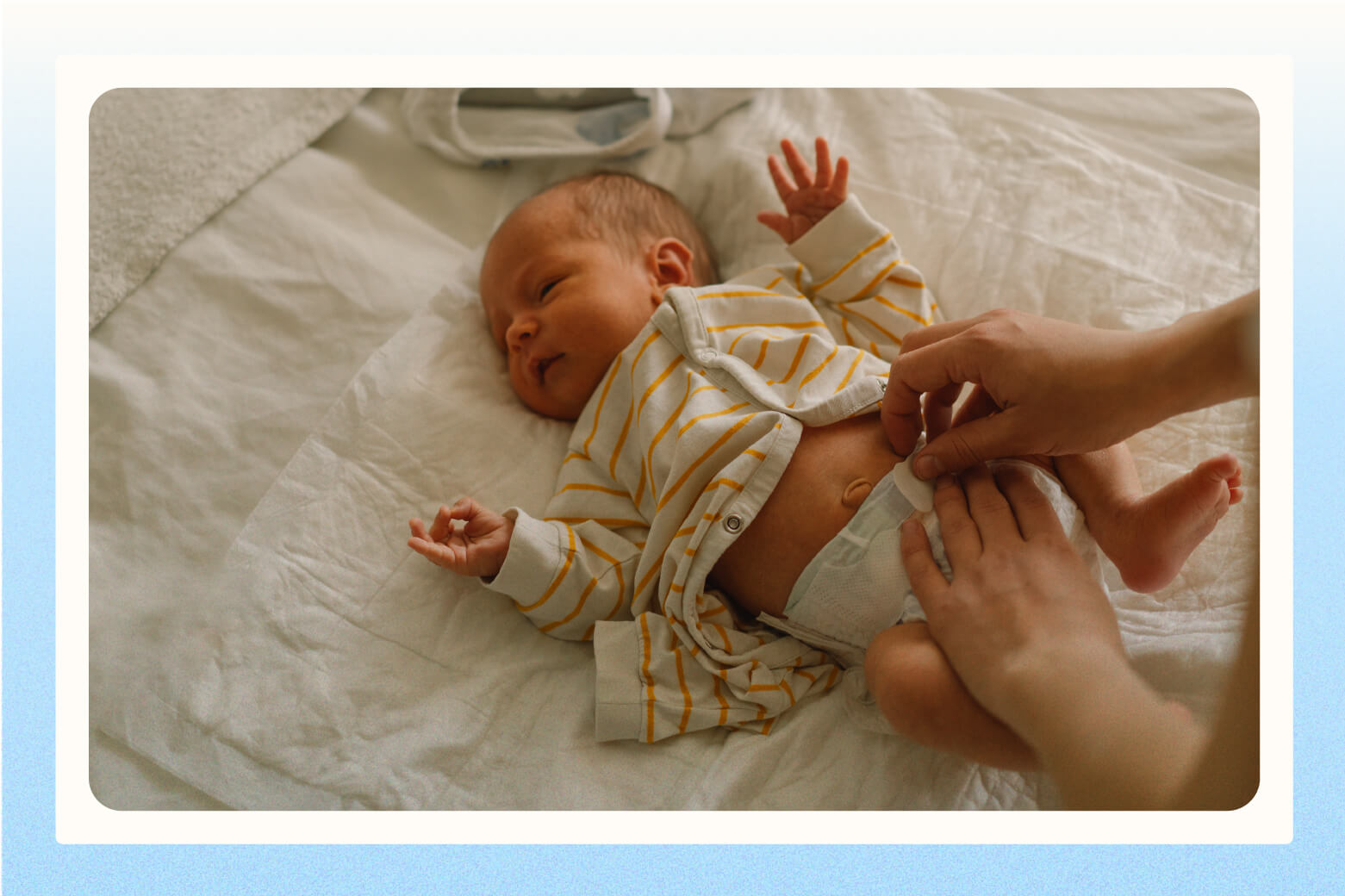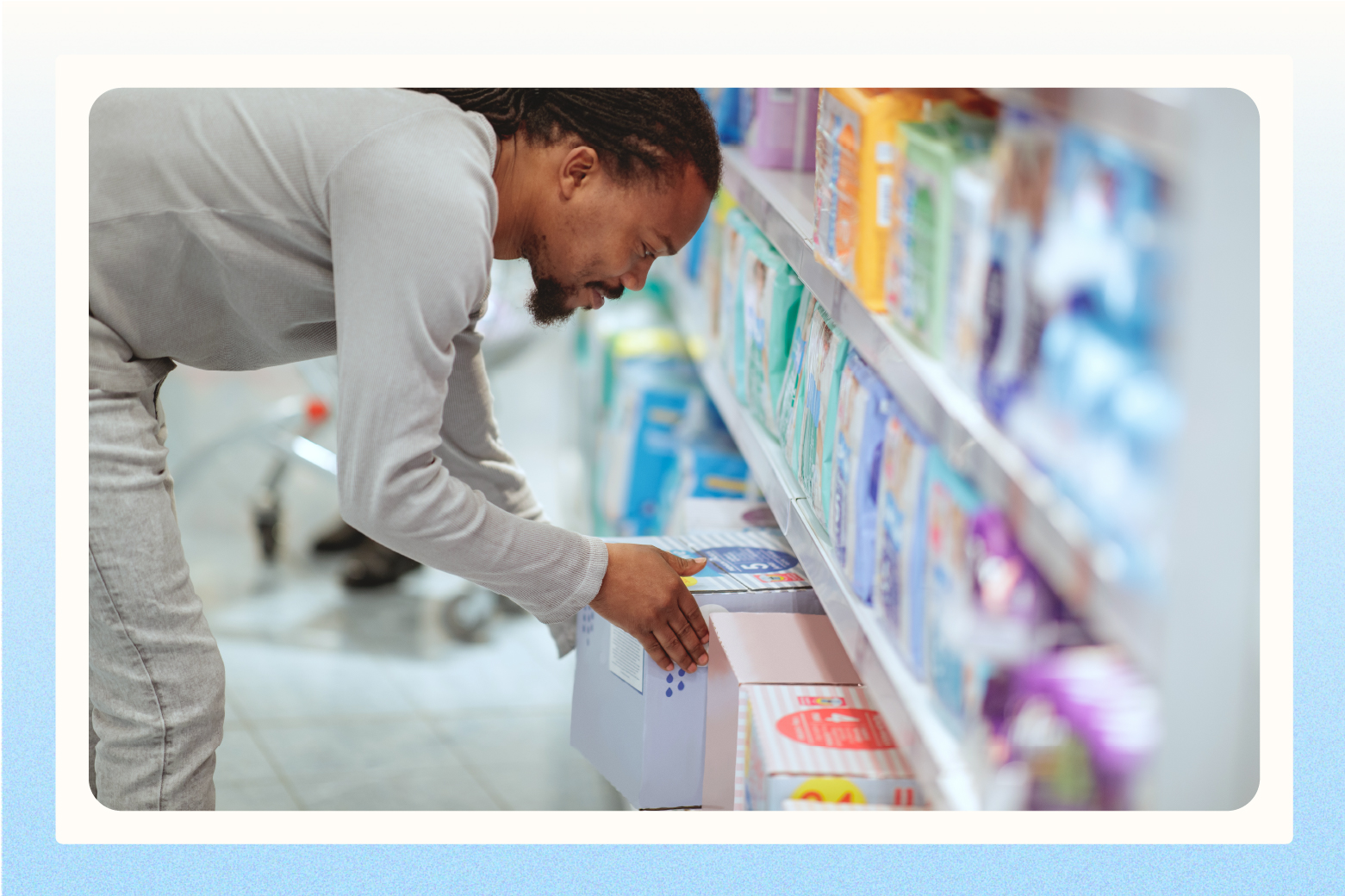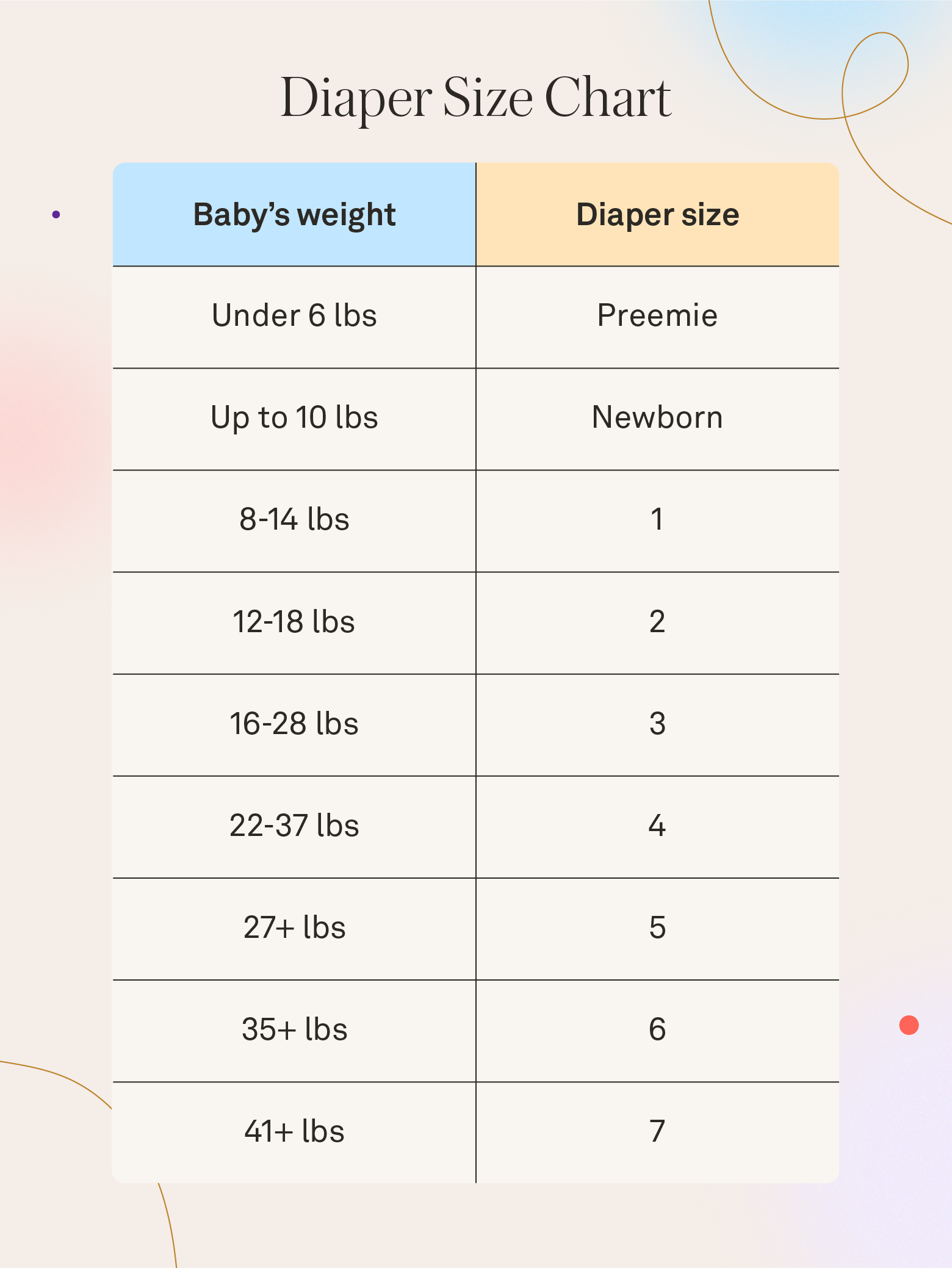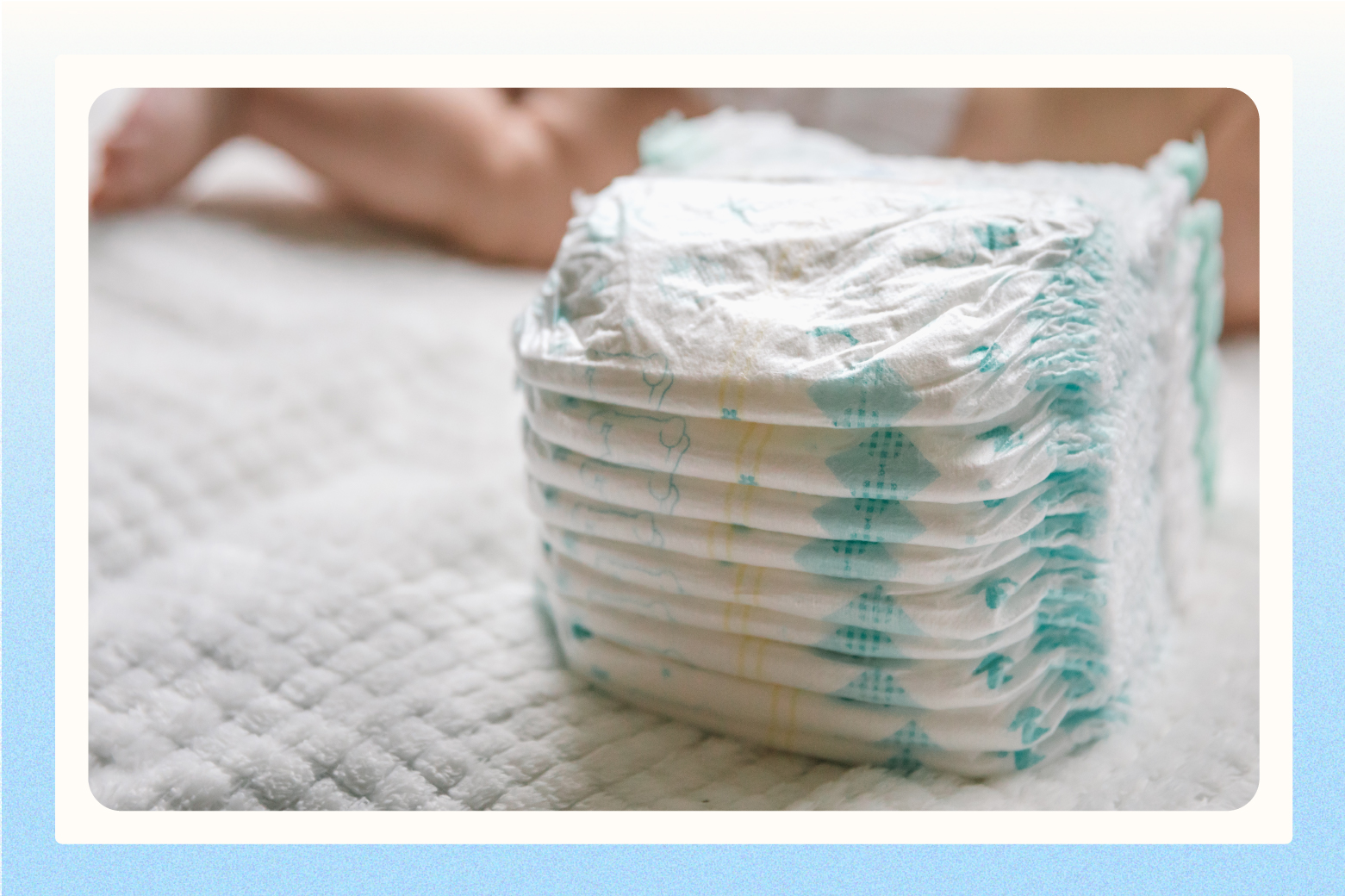Whether it’s your first baby or your fifth, the number of newborn diapers you’ll need can vary depending on your baby’s current size, how frequently you plan to change them, and whether you’ll be using disposable or cloth diapers.
On average, most newborns go through about 8-12 diapers per day during their first few months. That translates to at least 70-84 disposable diapers per week. Keep in mind that babies grow quickly, so you may want to keep a mix of newborn and size 1 diapers on hand to accommodate their changing needs as they grow.
Let’s look a little closer at common newborn diaper details that can help make planning for your baby’s arrival a bit easier.
How Many Diapers a Baby Really Needs
| Average Diaper Usage | |
| Baby’s age | Total # of diapers per day |
| 0-3 months | 8-12 |
| 3-6 months | 6-8 |
| 6+ months | 4-6 |

Understanding how many diapers your baby will need at different stages is essential for budget planning and smooth diapering. For a more comprehensive picture, let’s break down the estimated total quantity of diapers you will need by timeframes:
- 0-3 months = 720-1,080 diapers
- 3-6months = 540-720 diapers
- 6 months and older = 360-540 diapers
Your baby may go through a total of 1,620-2,340 disposable diapers in their first year. That’s a lot of poopy diapers and baby wipes! Keep in mind that these are rough estimates, and every baby’s needs can vary.
How the Cost of Diapers Adds Up

Considering the number of diapers newborns go through during their first months, the monthly cost can be roughly $48 to $144 for disposable diapers. Cloth diapers are a much more cost-effective option in the long run, despite an initial higher investment. A set of cloth diapers, including inserts and covers, can cost between $300 and $600, depending on the brand and style. The annual cost of cloth diapers, including washing, can range from $150 to $300 after you’ve purchased your initial set.
| Average Cost of Diapers | |
| Type of diaper | Estimated costs for 1 year |
| Disposable | $576-$1,728 |
| Cloth | $150-$300 |
When comparing the two options, disposable diapers can cost new parents a lot more than cloth ones. But the cloth option requires more washing and maintenance in comparison to the ease and simplicity of disposable diapers. Keep in mind that these numbers can also vary based on individual circumstances and diaper brands.
What if I can’t afford all these diapers?
If these costs seem overly prohibitive for your budget, look for a local resource from the National Diaper Bank Network or explore other strategies for finding free diapers and other baby items.
You might also consider signing up for a baby registry with a variety of diaper brands and sizes to receive diapers as gifts from your friends and family — it’s a fun and practical way to stock up on this essential item!
Diaper Sizing and Shapes… Oh My!

Diaper sizing plays a vital role in keeping your little one comfortable and leak-free. Diapers come in various sizes, usually indicated by weight ranges, to cater to your baby’s growing needs.
Understanding diaper size charts
Figuring out how to read diaper size charts is essential for expectant parents to choose the right fit for their baby. The weight ranges for each specific diaper size are typically indicated on the packaging itself or on the brand’s website. You should refer to the diaper size chart regularly, as babies grow quickly during their first year.
Choosing the right fit for your baby
The right diaper fit helps prevent leaks and ensure maximum absorbency. A snug, but not too tight, fit around the waist and thighs will keep your little one happy and comfortable throughout the day. Consider your baby’s individual needs, such as their activity level and body shape, to find the most suitable fit.
How to know when to change a diaper size
Look for signs that it might be time to move up to the next size, such as frequent leaks, red marks on the skin, or difficulty fastening the diaper. If your baby’s current diapers no longer provide a snug fit around the waist and thighs, they likely need a larger size.
Remember that as your baby grows, their diapering needs will change, so continuously checking the brand’s diaper size chart can help you stay on track. By choosing the right diaper size, you can ensure your baby stays happy and dry, making diaper changes a breeze for both of you.
Let the Diaper Stockpiling Begin

Now that you have a better grasp on the number of diapers you’ll need for your new little one, it’s time to make a plan for stockpiling the necessary amount. Try these five tips to get started:
- Start early: Begin stockpiling diapers well before your baby arrives to spread out the cost and have a good supply on hand when needed.
- Watch for sales: Look for deals and discounts on diapers at various stores and online retailers. Buying in bulk during sales can save you money in the long run.
- Register for diapers: Include a variety of diaper sizes and brands on your baby registry checklist so friends and family can contribute to the stockpile with gifts of diapers at your baby shower.
- Consider different sizes: Remember that babies grow quickly, so stock up on various diaper sizes, especially newborn and size 1, to be prepared for their changing needs.
- Store diapers properly: Keep diapers in a cool, dry place away from direct sunlight and extreme temperatures to maintain their quality over time.
Having the right number of diapers on hand — both at home and in your diaper bag — prevents last-minute rushes to the store and will help maintain your baby’s comfort and hygiene. Armed with these tips for planning ahead for your baby’s diaper needs, expectant parents can confidently welcome their new addition, knowing they are well-equipped to handle their diapering needs with ease and care.
Frequently Asked Questions
How many cloth diapers do babies need?
The number of cloth diapers babies need can vary based on several factors, including their age, how frequently they need changing, and how often parents plan to do laundry. Typically, babies 0-3 months need 12-18 cloth diapers a day, babies 3-6 months need 10-14, and babies over 6 months old need 8-12. To ensure a steady supply of cloth diapers, keep at least 24-36 diapers in rotation.
How do diapers impact the environment?
Disposable diapers can have a significant impact on the environment by contributing to landfill waste, taking hundreds of years to decompose. The production of disposable diapers requires large amounts of water, energy, and raw materials, further impacting the environment. Cloth diapers can be a more sustainable option in the long run when used and cared for properly.
Are disposable diapers recyclable?
Most disposable diapers are not recyclable in the traditional sense. Most disposable diapers are made with a combination of plastic and polymer materials, making them difficult to recycle through conventional recycling facilities. Urine and feces in used diapers also pose sanitation challenges for recycling centers. However, some diaper brands are working on developing more eco-friendly options, such as compostable or biodegradable disposable diapers.
What’s the best way to dispose of diapers?
The simple answer is that it depends on the type of diapers you are using. For disposable diapers, place them in a sealed trash bag before disposing of them in the regular trash bin to contain any odors and prevent contamination. For cloth diapers, remove solid waste before washing and then launder along with other baby clothing. Some parents also use diaper pails or wet bags to store soiled cloth diapers until laundry day.
